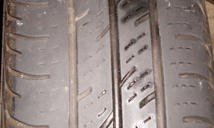Tire-change season has come and gone and many drivers are now storing their old tires in the backs of cool basements, stacked in sheds, or carefully covered outside. While it’s great to stash away seasonal tires for future use, many people don’t realize that tires have an expiration date. Each tire produced is stamped with a manufacture date and an expiry date that falls six years after the day the tires were made. This isn’t a tactic to increase tire sales – these dates provide an important safety precaution that keeps cars running smoothly and drivers safe on the roads.
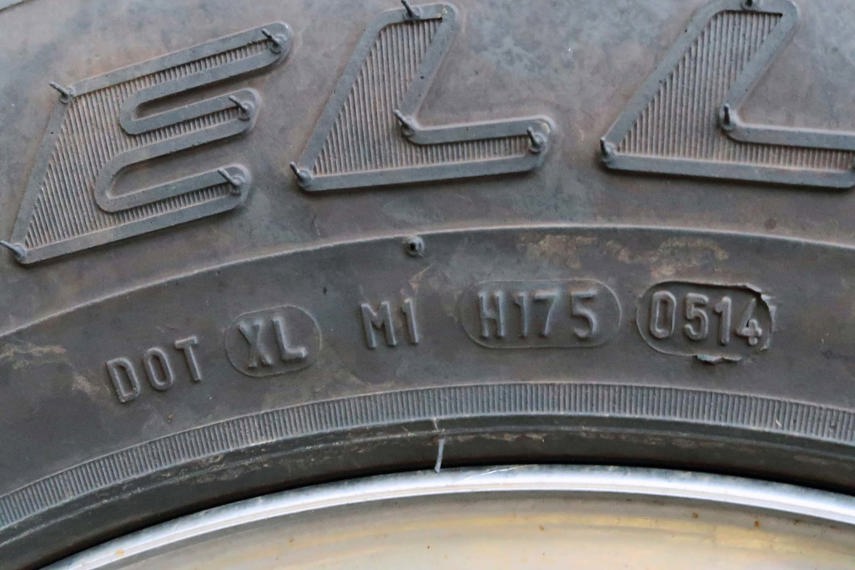
The week and year of manufacture are stamped on the tire. In this case, "0514" stands for the fifth week of 2014.
Why Dispose of Old Tires?
Manufacturers will remind drivers to replace their tires every six years, but drivers will often try to stretch out the tire’s timeline to save money. Unfortunately, prolonging tire replacement can lead to risky results. Over time, rubber gets harder and becomes brittle. As the tire spins during use, the pressure increases, and the drier rubber provides less grip. Skidding, increased stopping distances, and tire blowouts can occur, creating an unsafe environment for both the driver and the other cars on the road.
Once those old tires wear down or reach their expiry date, it’s time for them to be tossed. But what do you do with those old tires? Back in the day, tires would be thrown into landfills with other waste or left to erode in storage. But today, thanks to action taken by provincial governments, there are steps you can take to recycle your tires conveniently and at no cost.
The History of Tire Recycling in Canada
In February 1990, a massive tire fire was started in Hagersville, Ont. 14 million scrap tires were burned in that fire, creating black smoke, toxic fumes, and contaminated water wells. The fire burned for 17 days straight, and as a result, 4,000 people were evacuated from their homes. Extinguishing the fire cost the province more than $15 million to cover damages, with long-term repercussions for the area and its people.
Canada’s provincial governments took action after evaluating the impacts of that fire, and created the Canadian Association of Tire Recycling Agencies (CATRA) in 1999. With representation from all 10 provinces and the Yukon Territory, the CATRA now works together with the goal of keeping scrap tires out of landfills. Through proper management of end-of-life tires, the organization ensures that rubber is recycled into useful products and is disposed of in environmentally responsible ways.
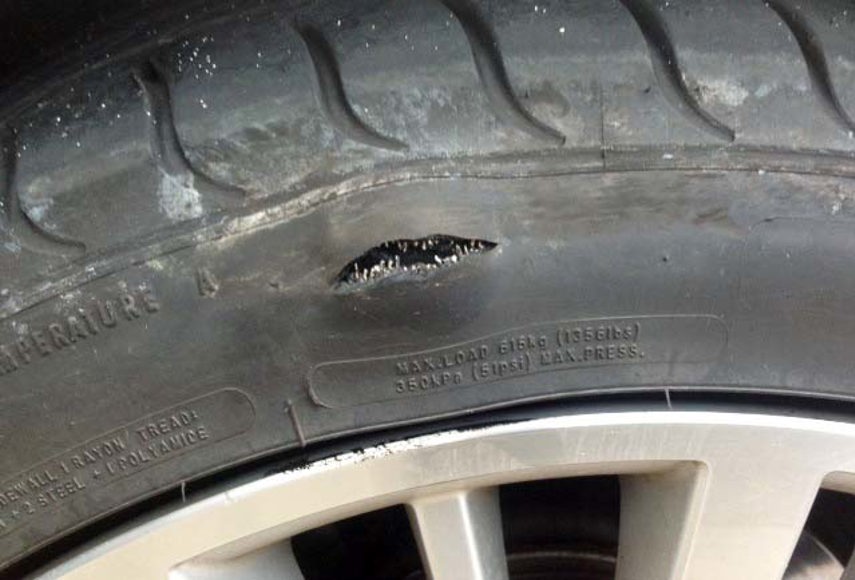
In B.C., the action to ensure that all tires are properly recycled is managed by Tire Stewardship BC (TSBC). As of this year, it has collected and recycled 100 million scrap tires in the province and turned them into useful products that improve local communities and help to keep B.C. beautiful. TSBC also issues 10 community grants per year used to fund and build community spaces for schools, fitness centres, and businesses that need help.
Manitoba and Saskatchewan also have Tire Stewardships in place, working together with participating tire retailers to collect and recycle old tires into new products that are of benefit to each province. The newest addition to the CATRA, the Tire Stewardship of Saskatchewan (TSS), was established in 2017 and is making strides in the scrap tire recycling space. Like in B.C., TSS runs a Return to Retailer Program (R2R) with participants in over 50 cities across the province doing their part to ensure that scrap tires are recycled responsibly.
Some provinces, such as Alberta, New Brunswick, Newfoundland & Labrador, and Nova Scotia have created multi-materials waste solutions, focusing on province-wide initiatives that develop, implement, and manage waste diversion through various recycling programs. Through its own provincial recycling program, Divert NS, Nova Scotia is recognized as a global innovator in waste diversion solutions with a thriving network of 83 independently owned ENVIRO-DEPOT locations across the province.
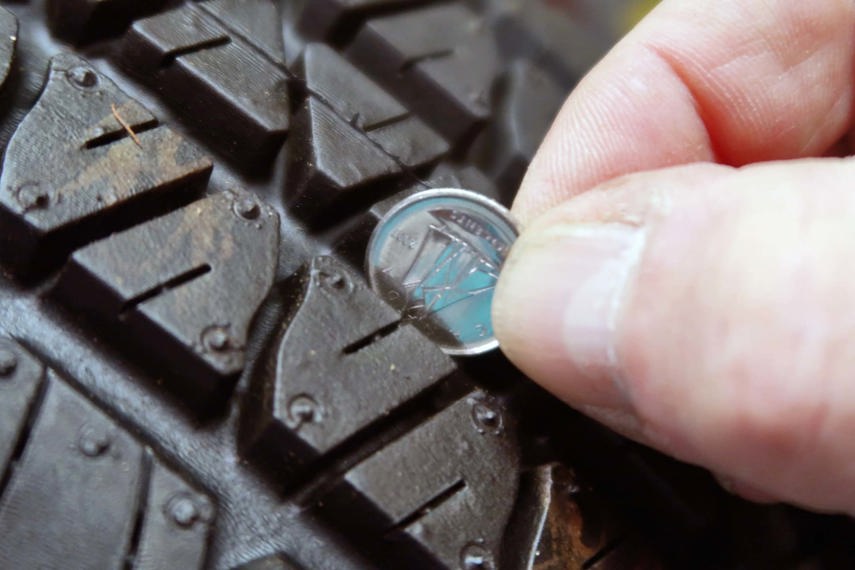
How Is It All Funded?
Drivers can recycle their tires for free at thousands of tire retailer locations across the country. Each province has its own individual way of achieving the overall goal of diverting 100 per cent of used tires from landfills and redirecting them to the creation of valuable products.
In B.C., when new car tires are purchased, an Eco Fee of $5 is collected. All of the revenue collected through those fees goes directly towards transporting and recycling B.C.-generated scrap tires and running program activities that focus on keeping communities clean. Tire Stewardships in Manitoba and the Yukon have similar fee collection programs in place, with specific fees varying in each province.
Where Can You Recycle Your Old Tires for Free?
In B.C., there are hundreds of Return-to-Retailer (R2R) locations across the province that have committed to properly recycling old tires. Through the free Recyclepedia App or TSBC.ca website, consumers can easily search for a location in their area, and return their old tires for free when they’re ready to purchase new ones.
In Saskatchewan, consumers can visit tirestewardshipsk.ca for a list of participating retailers. Through CATRAonline.ca, consumers can find links to the stewardship programs in other provinces and territories as well, each with their own process for tire recycling drop off and pick up programs in place.
Each city has its own means to collect and recycle used tires. In Toronto, drop-off depots can accept limited quantities of tires, which are then shipped, processed, and recycled into other products. If you’re getting a new set of tires installed on your car, many mechanics and dealerships can also take your old set for free and dispose of them or recycle them properly.
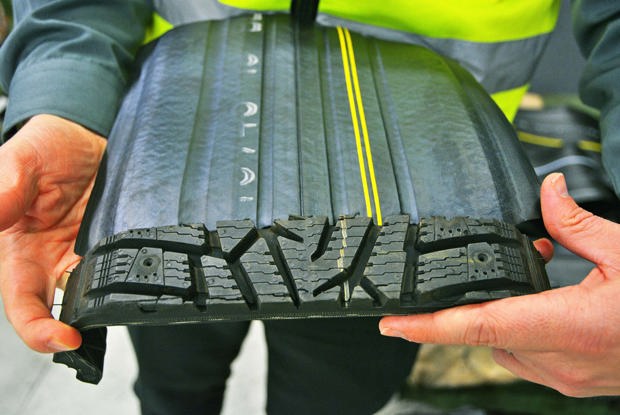
What Happens to the Tires That Are Collected?
Once tires are collected, they are processed and turned into important products such as playground surfaces, fitness tracks, flooring and roofing, gardening mulch, and other rubber products. Not only do these products provide a new and valuable use for end-of-life tires, but creating these products out of recycled rubber ensures safety, accessibility, and reduces the use of less environmentally friendly alternatives that may have been used instead.
What Are Some Ways to Upcycle Your Old Tires at Home?
Some people prefer to get creative and upcycle or reuse their old tires at home. From furniture and patio decor, to flower pots and play structures for kids, tires can be turned into almost anything with the right tools. With some rope and glue, old tires can be turned into chic outdoor ottomans. Add some colourful paint and strong bolts, and create a cute climber for kids. Struggle with tangled garden hoses? Cut the tire in half and coil the hose inside for a cheap and easy-to-use caddy. Brighten your garden by using colourfully painted tires as hanging planters or flower pots for your flowers. The options are endless, and making something useful is a great way to keep old tires out of the landfills.
